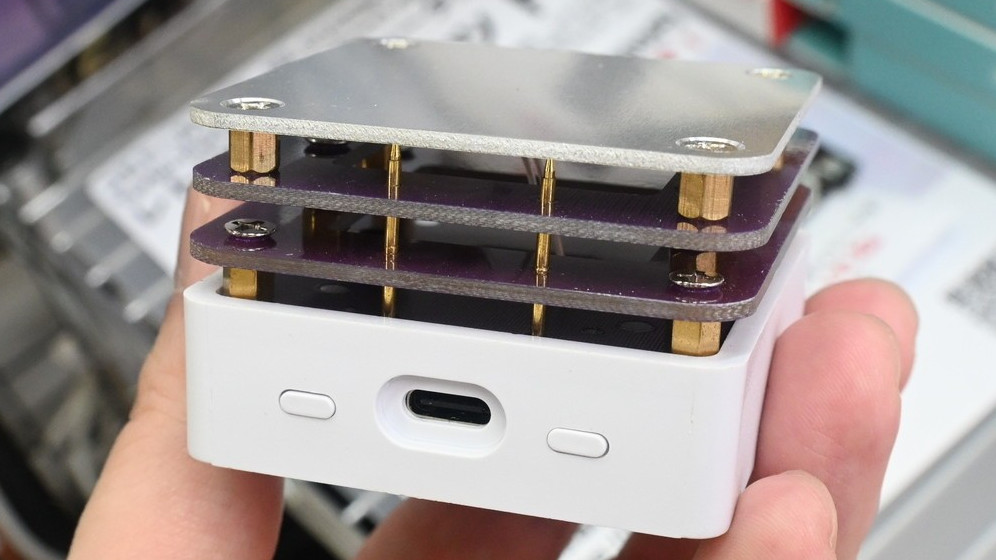Solder reflow plate runs off USB power but heats up to 350 degrees Celsius
The USB PD Reflow Plate is available for 4400 yen (or roughly $29 USD before other fees) from Shigezone.

Japanese storefront Shigezone has recently listed a USB PD (Power Delivery)-operated reflow oven. The top plate reaches a maximum temperature of 280 degrees Celsius at default settings or 350 degrees Celsius with modified settings, per a report from gdm.or.jp. The device retails for ¥4400 Japanese yen, which converts to roughly $29 USD before shipping and other import fees are applied.
The size of the top plate of this USB PD Reflow Plate is 55 x 55 millimeters, which is noted by the original shop page to be capable of "easily accommodating an Arduino Uno." As long as one uses caution and the proper equipment, though, this could also be a useful device for home GPU solder reflow/repair or the reflowing of other BGA (ball grid array) chips.
Compared to resoldering with a traditional soldering iron, solder reflowing is a process that's normally done in a (much larger) solder reflow oven, but this straightforward handheld reflowing plate should be able to do the trick for chips within its 55 x 55 dimensions. Solder reflowing also won't solve quite as many problems as proper resoldering does, but in the case of pins that aren't visibly broken but are still losing contact with the board in some way (for example, a bent PCB, even slightly, can sometimes cause only some or even one pin to lose contact with the board), solder reflowing can be all you need to solve the problem.
If you'd rather go "all the way," so to speak, we also recommend checking out our maintained list of the Best Soldering Irons and Stations. While a simple solder reflow with enough blanket heat can sometimes do the trick, there will be other times when you will need to get in there and start resoldering lost connections yourself. This especially applies to actually broken connections on your PCB, which blanket reflowing won't do anything to address since those connections will remain broken before and after reflowing all of the existing solder on the board.
That said, since most full-fat reflow ovens start at around $60 on Amazon and can easily climb into the hundreds of dollars, paying only about $30 for a 55 x 55mm reflow plate isn't that bad at all, especially if you get a good deal on shipping. It's also much more convenient, though, of course, its handheld form factor makes it a bit more dangerous to both the end user and the surrounding environment as a potential burn or fire hazard, so be sure to take the right safety precautions.
Stay On the Cutting Edge: Get the Tom's Hardware Newsletter
Get Tom's Hardware's best news and in-depth reviews, straight to your inbox.

Christopher Harper has been a successful freelance tech writer specializing in PC hardware and gaming since 2015, and ghostwrote for various B2B clients in High School before that. Outside of work, Christopher is best known to friends and rivals as an active competitive player in various eSports (particularly fighting games and arena shooters) and a purveyor of music ranging from Jimi Hendrix to Killer Mike to the Sonic Adventure 2 soundtrack.
-
InvalidError How hot you can get a plate depends on losses. How many watts does this thing consume? With 50W, you would likely struggle to reflow an Arduino board, forget about a GPU which has 20X the board surface area and a couple of extra copper planes wicking heat away.Reply -
edzieba Reply
Spec is 65W, regular USB-C compliant allows up to 100W, and USB-PD EPR allows up to 240W. 65W puts it right at the power range of trivially available laptop chargers (e.g. common Apple PD bricks), as you go higher in power the cost of the USB-C PSU skyrockets to the point you'd probably be better off with a dedicated DC PSU or just dealing with AC heating.InvalidError said:How many watts does this thing consume?